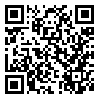1. Deak JD, Johnson EC. Genetics of substance use disorders: a review. Psychol Med. 2021;51(13):2189–200. [
DOI]
2. Meckel KR, Kiraly DD. A potential role for the gut microbiome in substance use disorders. Psychopharmacology (Berl). 2019;236(5):1513–30. [
DOI]
3. Taylor CB, Graham AK, Flatt RE, Waldherr K, Fitzsimmons-Craft EE. Current state of scientific evidence on Internet-based interventions for the treatment of depression, anxiety, eating disorders and substance abuse: an overview of systematic reviews and meta-analyses. Eur J Public Health. 2021;31(31 Suppl 1):i3–10. [
DOI]
4. Volkow ND, Han B, Einstein EB, Compton WM. Prevalence of substance use disorders by time since first substance use among young people in the US. JAMA Pediatr. 2021;175(6):640–3. [
DOI]
5. Gorgi Y, Tabaeian SM, Shokrolahi M. The effectiveness of mindfulness–based cognitive therapy on self–concept, self–acceptance and self–criticism in women with substance use disorders. Scientific Quarterly Research on Addiction. 2021;14(58):73–88. [Persian] [
Article]
6. Ross ND, Kaminski PL, Herrington R. From childhood emotional maltreatment to depressive symptoms in adulthood: the roles of self-compassion and shame. Child Abuse Negl. 2019;92:32–42. [
DOI]
7. Kannan D, Levitt HM. A review of client self-criticism in psychotherapy. Journal of Psychotherapy Integration. 2013;23:166–78. [
DOI]
8. Janoff-Bulman R. Characterological versus behavioral self-blame: inquiries into depression and rape. J Pers Soc Psychol. 1979;37(10):1798–809. [
DOI]
9. Friedman LC, Barber CR, Chang J, Tham YL, Kalidas M, Rimawi MF, et al. Self-blame, self-forgiveness, and spirituality in breast cancer survivors in a public sector setting. J Cancer Educ. 2010;25(3):343–8. [
DOI]
10. Löw CA, Schauenburg H, Dinger U. Self-criticism and psychotherapy outcome: a systematic review and meta-analysis. Clinical Psychology Review. 2020;75:101808. [
DOI]
11. Tariq M, Jameel R. Stigmatization, self-criticism and coping strategies of individual with substance abuse. European Journal of Research in Social Sciences. 2020;8(4):1–10.
12. Gilbert P. A brief outline of the evolutionary approach for compassion focused therapy. EC Psychology and Psychiatry. 2018;3(6):218–27.
13. Stearns DC, Parrott WG. When feeling bad makes you look good: guilt, shame, and person perception. Cogn Emot. 2012;26(3):407–30. [
DOI]
14. Heller A. Five approaches to the phenomenon of shame. Social Research. 2003;70(4):1015–30.
15. Matos M, Pinto-Gouveia J, Gilbert P, Duarte C, Figueiredo C. The Other as Shamer Scale – 2: Development and validation of a short version of a measure of external shame. Personality and Individual Differences. 2015;74:6–11. [
DOI]
16. Bilevicius E, Single A, Bristow LA, Foot M, Ellery M, Keough MT, et al. Shame mediates the relationship between depression and addictive behaviours. Addict Behav. 2018;82:94–100. [
DOI]
17. Luoma JB, Chwyl C, Kaplan J. Substance use and shame: a systematic and meta–analytic review. Clin Psychol Rev. 2019;70:1–12. [
DOI]
18. Sheikh Andalibi MS, Rezaei Ardani A, Amiri A, Morovatdar N, Talebi A, Azarpazhooh MR, et al. The association between substance use disorders and long–term outcome of stroke: Results from a population–based study of stroke among 450,229 urban citizens. Neuroepidemiology. 2021;55(3):171–9. [
DOI]
19. Stockton MA, Mughal AY, Bui Q, Greene MC, Pence BW, Go V, et al. Psychometric performance of the Perceived Stigma of Substance Abuse Scale (PSAS) among patients on methadone maintenance therapy in Vietnam. Drug Alcohol Depend. 2021;226:108831. [
DOI]
20. Coderre E, Conklin K, van Heuven WJB. Electrophysiological measures of conflict detection and resolution in the Stroop task. Brain Research. 2011;1413:51–9. [
DOI]
21. Mahu IT, Conrod PJ, Barrett SP, Sako A, Swansburg J, Lawrence M, et al. Specificity of personality relationships to particular forms of concurrent substance use among methadone maintenance therapy clients. Addict Behav. 2019;98:106056. [
DOI]
22. Nemati M, Dokaneheeifard F, Behboodi M. Comparing effectiveness of acceptance and commitment therapy (ACT), emotion–focused therapy (EFT) and combining ACT & EFT in the spiritual well–being of couples referring to counseling centers in Sari: a semi–experimental study. Research on Religion & Health. 2020;6(1):87–99. [Persian] [
DOI]
23. Ebrahimi S, Ahmadi K, Farokhi N. Effectiveness of emotion–focused therapy on psychological capital and post traumatic growth in women with multiple sclerosis. Journal of Nursing Education. 2022;11(3):85–96. [Persian] [
DOI]
24. Moradi S, Aghaei A, Golparvar M. Effectiveness of training based on healthy human theory and emotion–focused therapy in marital happiness. Caspian Journal of Health Research. 2021;6(3):81–90. [Persian] [
DOI]
25. Greenberg LS, Goldman RN. Clinical handbook of emotion-focused therapy. 1st ed. Washington, DC: American Psychological Association; 2019, pp: 520–34.
26. Niasti N, Ghorban Shiroudi S, Khalatbari J, Tizdast T. The effectiveness of an education package based on compassion-focused therapy, emotion-focused therapy, and acceptance and commitment-based therapy on the tolerance of anxiety and impulsivity of adolescents with aggressive behaviors. Islamic Life Journal. 2022;5(4):107–17. [Persian] [
Article]
27. Gilbert P, Clarke M, Hempel S, Miles JNV, Irons C. Criticizing and reassuring oneself: an exploration of forms, styles and reasons in female students. British Journal of Clinical Psychology. 2004;43(1):31–50. [
DOI]
28. Saadati A, Mazboohi S, Marzi S. A confirmatory factor analysis and validation of the forms of Self–Criticism/Reassurance Scale among teachers. Quarterly of Educational Measurement. 2019;9(34):133–47. [Persian] [
DOI]
29. Cohen TR, Wolf ST, Panter AT, Insko CA. Introducing the GASP Scale: a new measure of guilt and shame proneness. J Pers Soc Psychol. 2011;100(5):947–66. [
DOI]
30. Jokar B, Kamali F. Relation between spirituality and the feeling of shame and sin. Iranian Journal of Culture in The Islamic University. 2015;5(1):3–20. [Persian]
31. Greenberg LS, Watson JC. Emotion–focused therapy for depression. Washington, DC, US: American Psychological Association; 2006. [
DOI]


 ، محمد آرش رمضانی*2
، محمد آرش رمضانی*2 

 ، فائزه جهان3
، فائزه جهان3 





